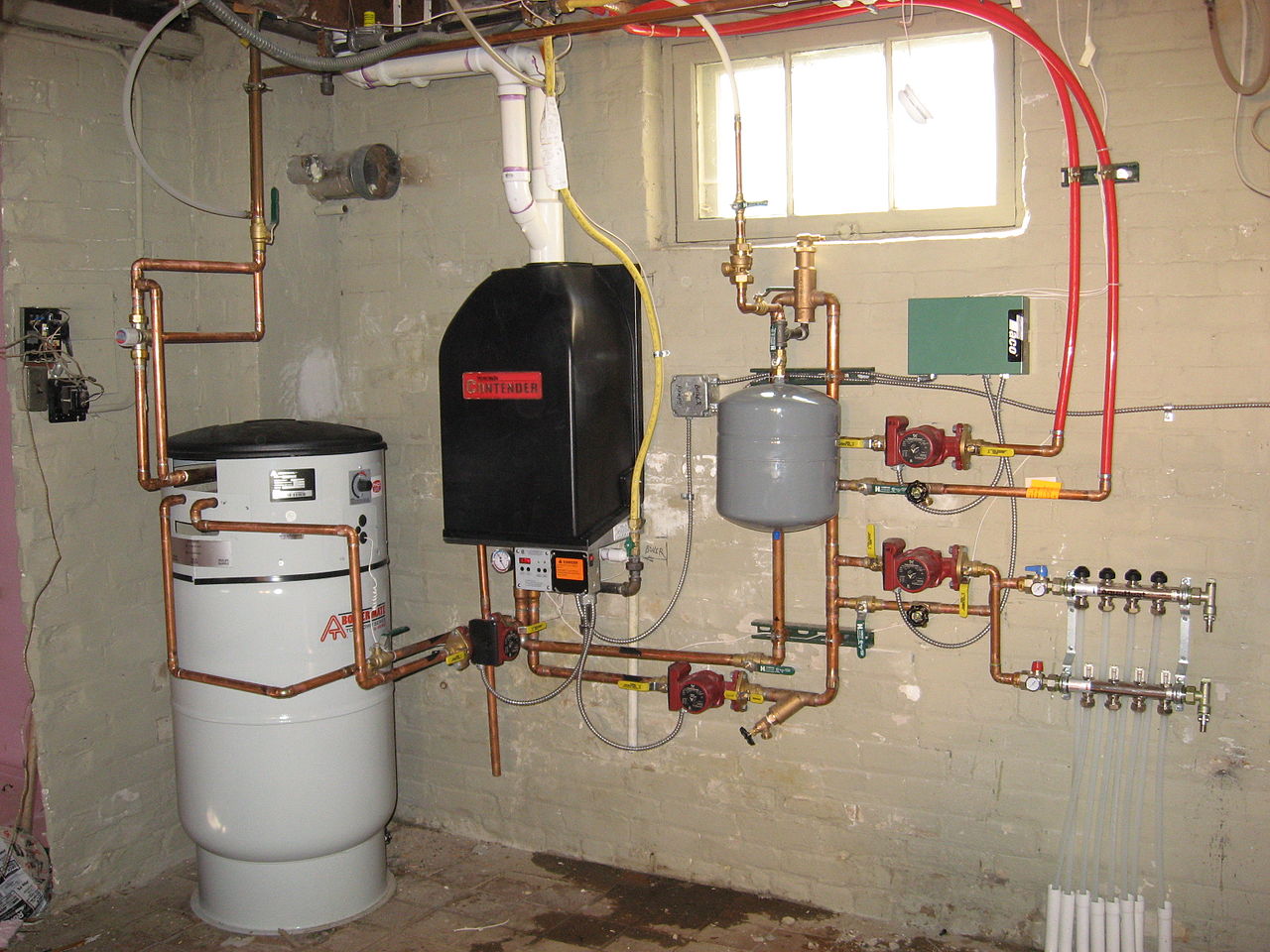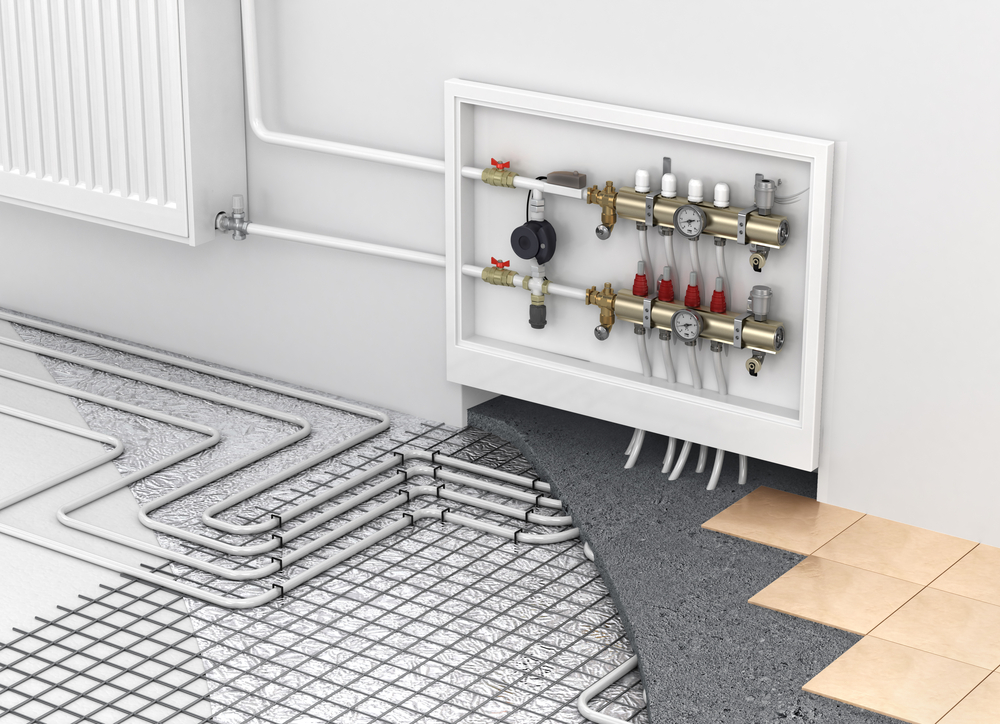Have you ever walked across a cold tile floor in the winter, shivering from the chill radiating up from below? Or perhaps you’ve envied your neighbor’s cozy home, where the heat seems to rise gently from the ground, enveloping them in a warm embrace. If any of this sounds familiar, you might be considering upgrading from your current hot water baseboard heating system to a radiant floor system.

Image: mromavolley.com
Converting your home’s heating system is a significant undertaking, but the potential rewards of increased comfort, energy efficiency, and even improved aesthetics can be substantial. This article will explore the process of converting from hot water baseboard to radiant floor heating, covering everything from the intricacies of the system to the various aspects of the installation process. We’ll also examine the benefits and drawbacks of this upgrade so you can make an informed decision about whether it’s the right choice for your home.
Understanding Radiant Floor Heating
Radiant floor heating is a sophisticated system that utilizes a network of pipes embedded beneath your floor, through which heated water circulates. This heated water then radiates warmth into the surrounding space, much like the sun. The result is a gentle, even heat that spreads throughout your home, making it feel more comfortable than traditional forced-air systems.
Radiant floor heating systems can be designed to work with various heat sources, including boilers, heat pumps, and even solar energy. When converting from hot water baseboard, the existing boiler could potentially be adapted to work with a radiant floor system, depending on its size and capacity.
The Advantages of Radiant Floor Heating
Radiant floor heating offers several compelling advantages over traditional hot water baseboard heating:
- Increased Comfort: Radiant heat feels more natural and comfortable than forced-air systems. Unlike forced-air systems, which can create drafts and uneven temperature distribution, radiant heat warms the space more evenly by heating objects and surfaces directly. This creates a feeling of warmth and coziness throughout your home.
- Improved Indoor Air Quality: Radiant floor heating does not circulate air, which significantly reduces dust and allergens in the home. This is particularly beneficial for people with allergies or respiratory problems.
- Greater Energy Efficiency: Radiant floor heating is more energy-efficient than baseboard heating, leading to lower heating costs. Radiant heating operates at lower temperatures than forced-air systems, as it directly warms surfaces rather than circulating air. This reduced temperature differential translates to significant energy savings, reducing strain on your heating system and your wallet.
- Enhanced Aesthetics: Radiant floor heating eliminates unsightly baseboard radiators, freeing up wall space and enhancing the aesthetic appeal of your home. This opens up a world of design possibilities, allowing you to create a more open and contemporary look.
Considerations for Conversion
While converting from hot water baseboard to radiant floor heating offers numerous benefits, it is important to consider some crucial factors before taking the plunge:
- Floor Structure: Radiant floor heating requires a suitable subfloor to accommodate the installation of the piping system. Depending on your existing floor construction, you may need to reinforce or modify the subfloor to support the weight of the piping and grout. A qualified contractor can assess your existing floor structure and determine if it requires any modifications.
- Floor Finish: Radiant floor heating works best with certain flooring materials. Tiles, stone, and engineered wood floors are excellent choices as they conduct heat effectively. Carpet can be used but will somewhat insulate the warmth, and solid hardwood floors may require special considerations to accommodate expansion and contraction due to temperature fluctuations.
- Cost of Installation: Converting your home to radiant floor heating is a significant investment, as it involves extensive labor. The cost will vary depending on the size of your home, the complexity of the installation, and the materials used. It’s essential to secure multiple quotes from reputable contractors to compare pricing and scope of work.
- Existing Boiler Capacity: It’s critical to ensure that your current boiler has the capacity to handle the additional load of running a radiant floor heating system. A professional can assess your boiler’s capacity and recommend any necessary upgrades or replacements.

Image: mromavolley.com
Installation Process
Converting from hot water baseboard to radiant floor heating is a complex process that requires meticulous planning and skilled installation. Here is a general overview of the steps involved:
- Design and Planning: The first step is to work with a qualified contractor to design a custom radiant floor heating system tailored to your home’s layout and heating needs. This includes determining the optimal pipe spacing, flow rates, and control systems for your specific requirements.
- Preparation and Installation of Piping: Once the design is finalized, the existing baseboard system is removed, and the subfloor is prepared for installation. The piping system is then carefully laid out according to the designed plan, ensuring proper insulation and securing the pipes to the subfloor..
- Floor Covering Installation: After the piping is installed, the floor covering of your choice can be laid. This may require additional preparation, such as a setting bed or tile backer board, depending on the type of flooring selected.
- Testing and Commissioning: Once the installation is complete, the new radiant floor heating system is tested and commissioned to ensure it operates correctly and meets the desired heating requirements.
Choosing a Contractor
Selecting the right contractor for your radiant floor heating conversion is crucial to ensure a successful outcome. Look for a contractor with experience in radiant floor heating systems, excellent references, and a solid understanding of local building codes and regulations.
When interviewing potential contractors, ask about:
- Experience: Inquire about their experience with radiant floor heating installations and any specific certifications or qualifications.
- References: Request contact information for past clients to gauge their satisfaction with the contractor’s work.
- Warranty: Determine the warranty coverage offered by the contractor and the components they install.
- Communication: Ensure the contractor is responsive, clear in their communication, and willing to address your concerns.
- Cost Breakdown: Obtain a detailed cost breakdown that outlines the labor, materials, and other expenses associated with the project.
Convert Hot Water Baseboard To Radiant Floor
Conclusion
Converting from hot water baseboard to radiant floor heating can dramatically improve your home’s comfort, energy efficiency, and aesthetics. Taking the time to understand the process, weigh the costs and benefits, and choose a reputable contractor will greatly enhance the likelihood of a successful and rewarding experience. As you move forward, be sure to factor in the specific details of your home and its heating requirements, making informed decisions tailored to your unique situation. Don’t hesitate to contact a qualified HVAC professional for personalized advice and guidance as you embark on this journey to transform your home into a more comfortable and energy-efficient haven.





